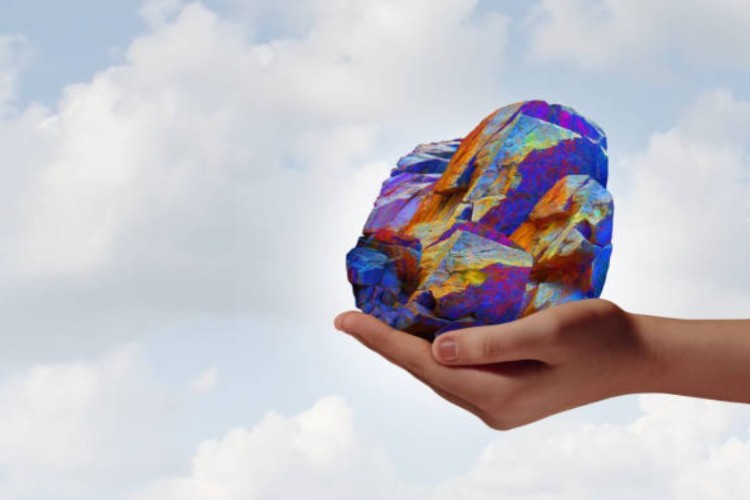
Rare-earth elements have become central to the global technological economy. They underpin the electrification of transport, the expansion of renewable energy, and the modernisation of defence capabilities. India, despite holding the world’s fifth-largest reserves, has remained dependent on imported rare-earth permanent magnets that power these industries. The government’s approval of a ₹7,280-crore scheme to manufacture sintered rare-earth magnets is therefore a long overdue attempt to correct a structural weakness in the country’s industrial base.
India imports roughly 900 tonnes of rare-earth magnets each year, although consumption is rising quickly. EV adoption, wind-power expansion and electronics manufacturing are driving demand, with industry estimates suggesting that annual magnet requirements could double by 2030. The planned domestic capacity of 6,000 tonnes per annum is therefore not merely import substitution; it is about building headroom for the next phase of growth.
READ | India-Afghanistan ties: New power shifts reshape regional security
Yet China dominates every stage of the global rare-earth value chain, from chemical separation to magnet finishing, controlling 90–95% of supply. Export controls and licensing requirements have tightened this monopoly. Any interruption in Chinese supply would immediately disrupt India’s EV, electronics and defence sectors. That risk has become clearer as countries scramble to rewire their supply chains.
An integrated domestic chain — From oxide to magnet
The new production-linked incentive scheme marks the first coordinated attempt to build an integrated domestic chain — from oxide processing to metal, alloy and final magnet. The government is offering ₹6,450 crore in sales-linked incentives and ₹750 crore in capital support, seeking to attract five global manufacturers capable of meeting the technological complexity of REPM production.
India has traditionally followed an extract-and-export model in minerals. Rare-earth processing, however, requires specialised chemical engineering and stringent environmental controls. Precision metallurgy and specialised alloys demand capabilities that Indian firms have not yet developed at scale. The new scheme attempts to shift the focus from mining to value addition. It is a sensible shift, but execution will determine outcomes.
Downstream factories cannot run without upstream reliability. India’s exploration spending remains low, and discoveries—such as the lithium find in Jammu & Kashmir—show how fragile early-stage assessments can be. The National Critical Minerals Mission, launched last year, has begun the process of mapping and securing key minerals. But without a steady pipeline of domestic feedstock or long-term overseas agreements, magnet makers may still rely on imported oxides. That only shifts the vulnerability upstream.
India’s critical minerals diplomacy
The global race for critical minerals is already well underway. The United States, Europe and Japan have poured public money into securing alternate supply chains. India cannot build an insulated system; it must plug into global alliances.
New Delhi’s participation in the Quad Critical Minerals Partnership, its agreements with Australia, and its attempts to deepen ties with resource-rich African and Latin American countries will be central to securing long-term supplies of processed oxides and semi-finished metals. The magnet scheme will succeed only if it is linked to a broader foreign-policy strategy that acknowledges how mineral security shapes economic security. India has joined this race late, but it now needs active diplomacy to compensate for that delay.
A circular economy strategy
The world is also shifting toward recycling rare-earth magnets through “urban mining”, given the environmental and geopolitical risks of new extraction. Japan and the EU have invested heavily in magnet recovery from e-waste, with recycling now supplying a measurable share of their rare-earth demand. India’s policy still treats recycling as a peripheral activity.
A credible plan for magnet recycling—supported by standards, collection networks, advanced metallurgy and incentives—would diversify supply, reduce environmental pressure and strengthen the long-term economics of domestic manufacturing. A modern rare-earth strategy can no longer rely solely on fresh mining. The circular economy must be built into the design.
Industrial policy and institutional weakness
India’s past attempts at rare-earth processing have been limited. Indian Rare Earths Limited has never evolved into a global technology leader, and environmental concerns around thorium-bearing monazite sands have slowed coastal mineral processing. Private participation has been constrained by regulatory ambiguity and slow environmental clearances. These bottlenecks will not disappear simply because incentives are large.
Building a factory is not enough. India needs technical standards, environmental safeguards, and a research ecosystem capable of supporting high-performance magnet production. It also needs skilled engineers and a supplier base that can design, test and refine advanced magnet systems. Without these, India risks creating capacity without competitiveness.
India’s late entry into the rare-earth magnets race has real consequences. Sectors that rely on magnets—EVs, wind power, strategic electronics—have already flagged supply risks. The new scheme offers a foundation for a more resilient industrial strategy. But industrial foundations need more than capital support. They need exploration, technology partnerships, recycling ecosystems and coordinated diplomacy.
Mineral security is now central to economic strategy. Countries that control critical minerals will shape the next generation of manufacturing. India’s ₹7,280-crore rare-earth magnets push is an important first step. The task now is to build an ecosystem that turns that step into durable capability.
